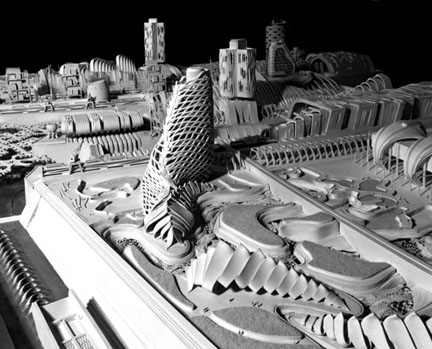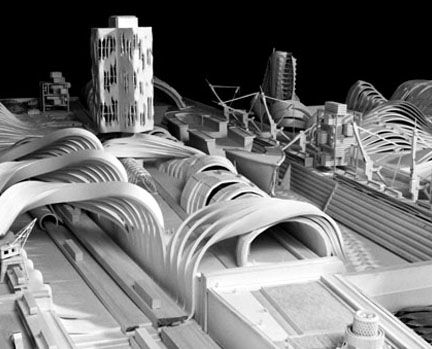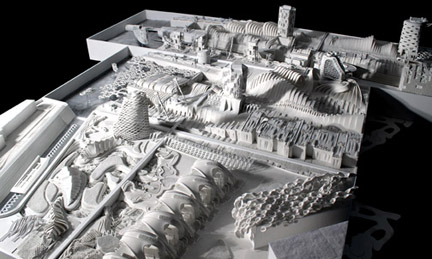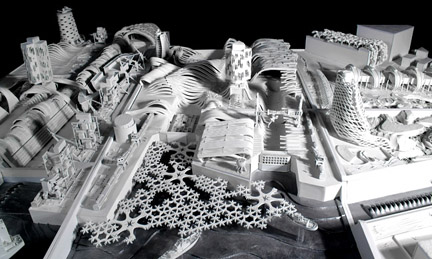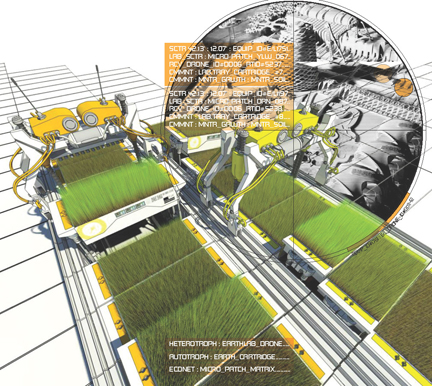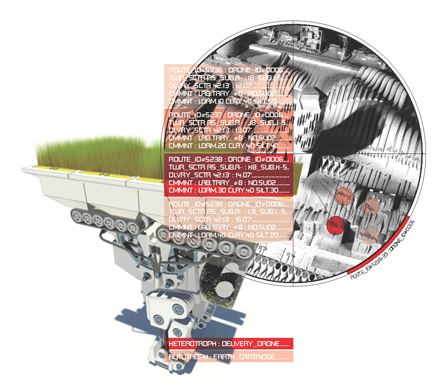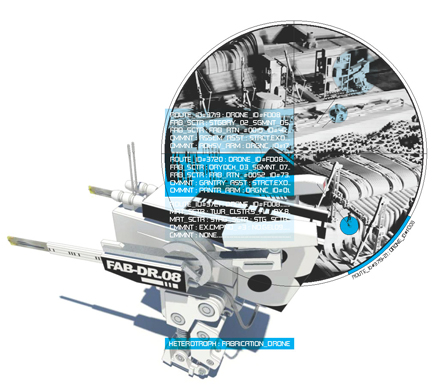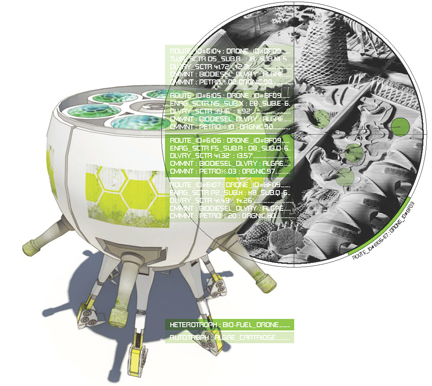| Planetary
ONE ///////// Partners: Maria Aiolova, Carlos Barrios, Alexander Felson
PhD, Nurhan Gokturk, Mitchell Joachim PhD, David Maestres, Jason Vigneri-Beane
Project:
SUPERDOCKING, Brooklyn Navy Yards
Project
Area (Jason Vigneri-Beane): Infrastructural Bot Design for Future Urban
Precinct (Images 1-4 Above)
Project
Role (Jason Vigneri-Beane): Founding Partner Responsible for Infrastructural
Bot Design, Modeling, Representation (Images 1-4 Above) and Participant
in General Project Direction Discussion
General
Project Statement:
As
a form of Urbaneering, this project continues to explore the possibilities
of the architectural retrofit. On an urban industrial site in Brooklyn,
New York, Super Docking imagines a self-sustained working waterfront as
a center for clean industries that are incubators for new technologies.
The designed landscape is adapted to local climate dynamics and is outfitted
for a living infrastructure to seamlessly connect land and water. The
project interfaces the historic dry-docks, which are retrofitted into
five distinct research and production facilities; massive 3D digital prototyping/
scanning, replicable test beds for studies in limnology and restorative
ecology, freight delivery of raw materials and finished goods, automated
shipbuilding, and phytoremediation barges for CSO (Combined Sewer Overflow)
issues. The surface of the site mitigates architectural space and river
flows. It supports programs to clean polluted water and sets the terrain
for privileging pedestrian movement throughout the site. The project docks
are highlighted by shapeable deployable structures and membranes. It is
an industrial ecology landscape established to manage both man made and
natural systems, with reinforced land use needs. The current urgency to
aggregate areas for innovation with social and economic diversity is in
demand. Our project encourages research, both as an industrial activity
and as an ecological intervention. We wish to promote new products, jobs,
green office spaces, and areas of exchange
Infrastructural
Bot Design Statement: In order to address complex terrains,
dynamic infrastructural needs, plug-and-play urban systems and the ability
to upgrade and swap out infrastrcutural components we design four types
of Infrastructural Bots that would populate the site, traverse its sectors
and terrains and act as catalysts, monitors and harvesters. The four types
are:
1
- EARTH_DRONE: Maintains a synthetic-ecological
laboratory and a micro-patch landscape of ecological test-beds.
2
- DELIVERY_DRONE: Shuttles materials among different
sectors/programmatic structures.
3
- FABRICATION_DRONE: Performs maintenance, diagnostics,
repairs and new construction for the industrial sectors.
4
- BIO-FUEL_DRONE: Provides a mobile, local and
adaptable micro powerplant for the various decentralized activities and
operators of the project.
Credits:
Mitchell Joachim, Nurhan Gokturk, Maria Aiolova, David Maestres, Jason
Vigneri Beane.
Design Team: Carlos Barrios, Alex Felson, Walter Meyer, Melanie Fessel,
Zafirah Bacchus, Ivy Chan, Courtney Chin, Adrian De Silva, Julianne Geary,
Francisco Gill, Shima Ghafouri, Jacqueline Hall, Kelly Kim, Florian Lorenz,
Bart Mangold, Dustin Mattiza, Chema Perez, Alsira Raxhimi, Daniel Russoniello,
Melody Song, Allison Shockley, Katherine Sullivan.
Published in:
Global
Design: Elsewhere Envisioned. Editors: Mitchell Joachim,
Peder Anker, Louise Harpman. Publisher: Prestel.
Tarp:
Not Nature. Pratt Institute School of Architecture. Essay:
"Hello_EcoNet". Author: Jason Vigneri-Beane
|
